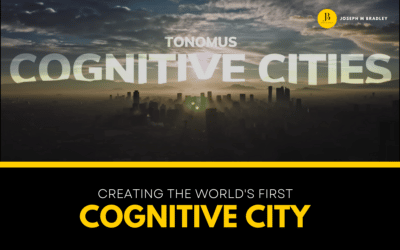As a leader, you know the importance of diversity. But if you don’t include this one thing, you’re leaving profits on the table.
Several years ago, a company hired me to lead their inclusion and diversity initiative and asked me to join their leadership team to discuss an important competitive decision.
Leaders from engineering, marketing, finance, strategy, operations and sales participated and the outcome that day was a decision to lower their price to best compete strategically.
As the meeting drew to a close, the leadership team asked me what I thought about the process they had followed.
But before I get into that, you may be asking yourself, what’s the difference between diversity and inclusion?
It doesn’t matter what your role is at the company you work with, it is critical to understand the difference because it impacts your bottom line.
Diversity is the potential to create value by having a broad range and representation of the global population present in your company.
Inclusion is the realization of the value through the collaboration and interaction of your diverse workforce.
Now back to that meeting I had several years ago…
While there was no doubt the company had brought together a diverse representation of leaders and viewpoints, I pointed out that only two dominant voices on the entire call shared their opinion. Although many cultures, regions and diverse individuals were represented on the call, I told them I thought many participants may not have been comfortable verbalizing their views.
This led me to suggesting a more inclusive approach: allowing anonymous polling of the ten leaders participating — something very easy to do on a system like WebEx — a Cisco system that allows you to have online meetings and presentations, webinars, town halls, online courses and training, and online presentations..
Agreeing with my recommendation, they took an anonymous poll revealing that eight of the 10 people on the call were opposed to lowering the price offering excellent substantiation that had not been expressed during the meeting.
Take a moment to think that over.
While 10 people were on the call, two of the main voices said to lower prices. Yet, eight of them didn’t speak up when they had opposing views.
Imagine what would have happened if the conversation would have stopped there…
This demonstrates the difference between diversity and inclusion.
While the organization had brought together a diverse group of people, they had not created an environment where all members felt included and free to participate. An inclusive approach allows engagement and freedom of expression, and captures the value from each interaction. In this case, it also demonstrated that inclusion can drive business value as it proved to be a billion-dollar decision.
My sentiment isn’t just based on personal experience. And I wouldn’t want you to just take my word for it.
Research from Cisco Systems found that 93% of inclusive organizations exceeded their ROI expectations for technology investments as opposed to only 28% for non-inclusive organizations.
McKinsey & Company’s research on diversity found companies that are unable to successfully create an inclusive environment are statistically more likely to have financial returns below their national industry median.
Successfully building an inclusive organization should be a business imperative. Here are just three of the business benefits of prioritizing inclusion.
Advantage #1: You maximize your employees’ focus on building value.
Your goal should be an inclusive environment in which 95% of your employees’ abilities are directed towards their ability to execute rather than their ability to fit in.
Often, minorities will enter an environment dominated by one race and focus on out how to assimilate into their environment instead of spending time focusing on how they can contribute to the bottom line and drive value.
When a Caucasian colleague recently joined me at an event sponsored by leading African American technology executives, I noticed he was a little bit uncomfortable. I reassured him it was okay to feel a little bit uncomfortable. What you are experiencing is what many people feel walking into an environment where they are the minority: whether you are women walking into an all-male environment or you are walking into an environment that is dominated by one particular race.
Often feeling unempowered to participate, minorities unfortunately spend their bulk of their time trying to figure out how to assimilate into the environment. My friend was dedicating possibly 20% even 50% of his mind share power focused on assimilating into this event, rather focusing on how he could contribute value.
Advantage #2: You execute according to plan
Most diversity programs fail because management and employees do not believe in them or do not make them a priority. The passion that is needed to drive the movement towards change has to come from the top.
In a large organization, you often find that it isn’t actually one organization but multiple micro-organizations; it is not one company with 50,000 employees that are aligned to a common goal and a common vision, but 50,000 companies made up of one employee each.
How does this affect the bottom line? Members of staff who do not feel included — who do not feel they have a voice — become disengaged.
It is imperative to foster full engagement in company strategy, otherwise you cannot gain alignment. There is no way to ascertain whether your strategy is executing according to plan because you never gained consensus from the onset.
The entire management team must foster active engagement from the organization and provide the framework to build a truly inclusive workplace. Once leadership makes it a priority, it is easier to inspire others and get the business behind it. Without it, employees will not have the motivation to confront the personal biases and habits that squelch even the most diverse workplaces. As a result, you will not achieve the level of engagement you need from your employees nor build the momentum required to get things done.
Advantage #3: The sky is the limit
Highly engaged employees have personal motivation to go above and beyond what they originally thought was ever possible. With engagement comes a critical emotional connection driving a level of passion required to execute and succeed in today’s environment.
As a business leader, it is up to you to lead your organization as it takes the leap from superficial diversity to true inclusivity. Inclusivity is the only way to be sure you are taking full advantage of your company’s most vibrant and valuable resource: the minds of your people. It will reduce the amount of time needed to achieve alignment in your organization, which, in turn, will improve the ability of your teams to execute your strategic plans. You will inspire the level of emotional connection your employees need to drive forward and persevere through difficult challenges they will invariably face.
Once you inspire your employees to fully engage, the sky really is the limit.
Inclusion is not just the right thing to do, it’s the profitable thing to do.





